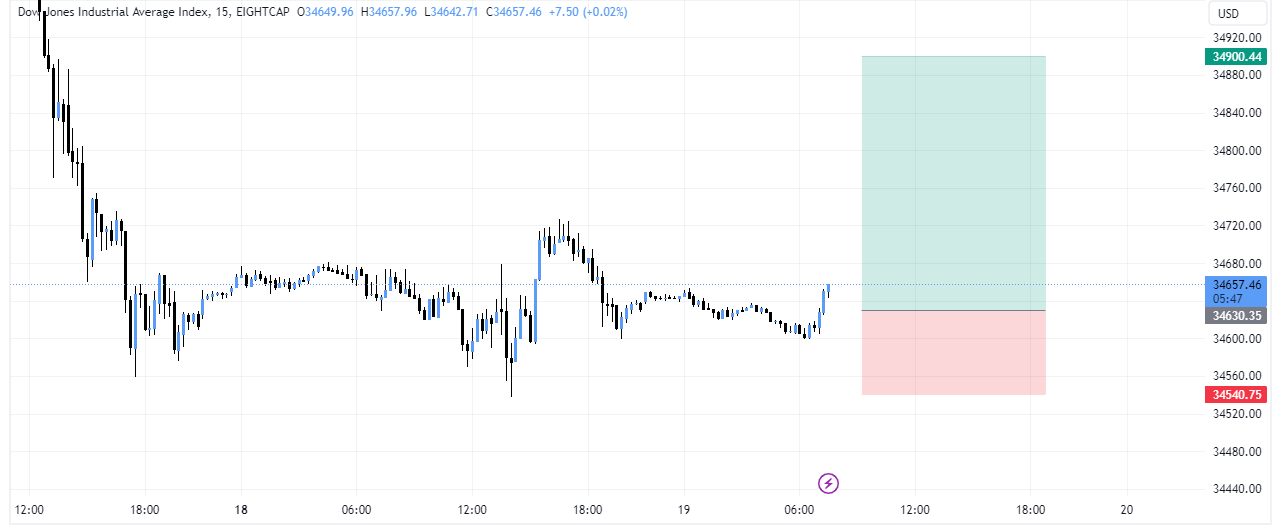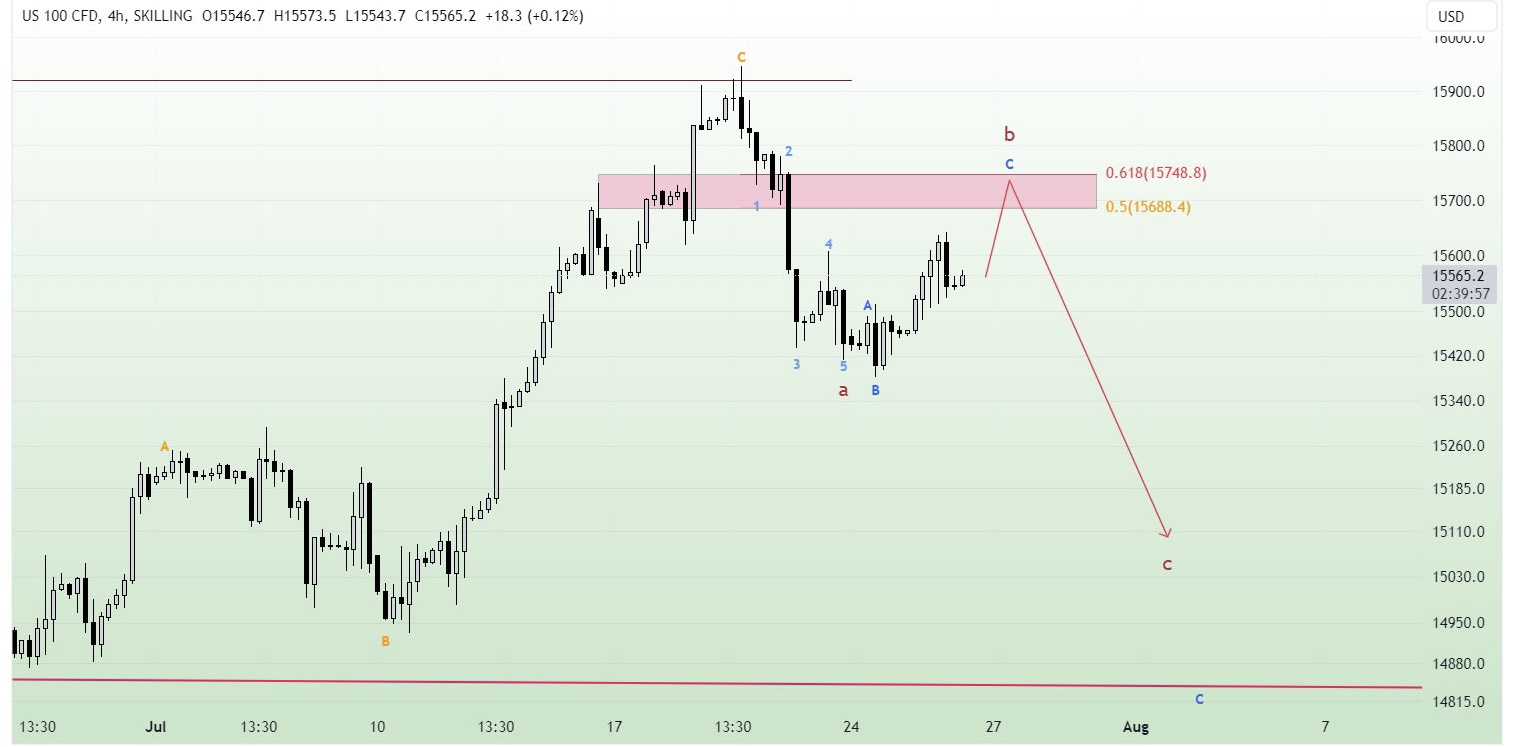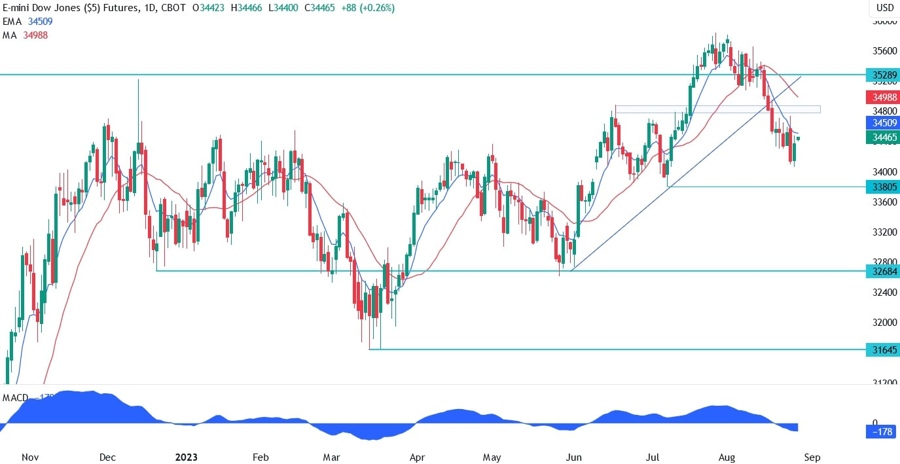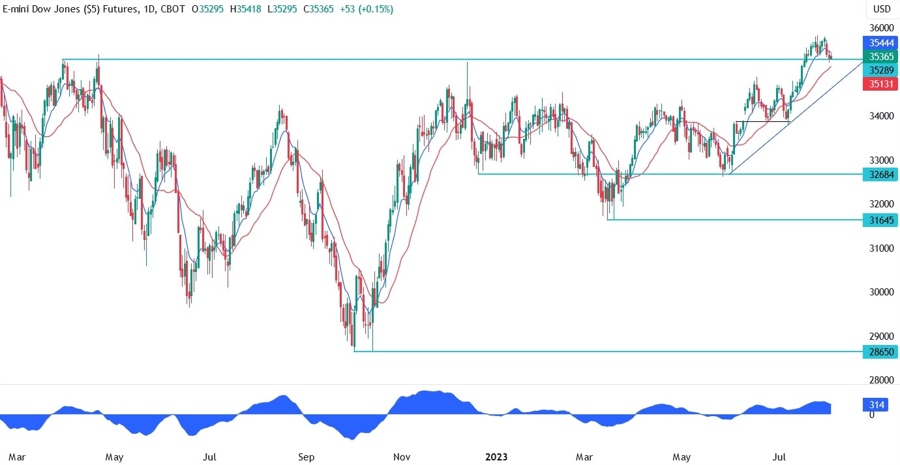Straits Times Index (STI)
Parent Index
NA
Indices informations
Listed Exchanges
| Singapore Exchange |
Related Instuments
| FTSE ST Mid Cap Index |
| FTSE ST Small Cap Index |
| FTSE ST China Index |
Sector Represented
| Banks |
| Investments |
| Real Estates |
| Airlines |
| Industries |
Indices
- BSE SENSEX
- CAC 40
- CBOE NASDAQ-100 Volatility Index (VXN)
- CBOE Volatility Index (VIX)
- China50-FTSE China A50 Index
- DAX
- DAX PERFORMANCE-INDEX-GDAXI
- DE40-Germany 40 Index DAX
- Dollar Index USDX-DXY-DX-Dixie
- Dow Jones Industrial Average-DJIA
- EURO STOXX 50 SX5E
- FTSE 100 Index-UK100 Index
- Germany 30
- Hang Seng Index
- IBEX 35-Spain 35
- NASDAQ Composite
- NASDAQ-100
- Nikkei 225
- Russell 2000 Index
- S&P/ASX 200
- Singapore Blue Chip Index-STI
- Swiss Market Index (SMI) Switzerland Blue Chip Index
- TecDax Price Index
- TECHDE30-Germany Tech 30 Index
- US Tech 100 Index UT100
- US2000-US Small Cap 2000 Index
- US30-US Wall Street 30 Index
- US30M- US Wall Street 30 Index M
- US500-S&P 500 (GSPC, INX, SPX)
- US500-US SPX 500 Index
- US500M-S&P 500 Mini
- All Ordinaries
- Amsterdam Exchange Index AEX index
- ATX-Austrian Traded Index (ATX)
- BEL 20
- BELEX15
- BIRS
- BIST-Borsa Istanbul
- CROBEX
- EGX 30 Index Egypts Leading Stock Market Index
- FTSE All-Share Index
- FTSE Bursa Malaysia Index-KLCI Index
- FTSE MIB-FTSE MIB 40
- Índice Bursátil Caracas (IBC)
- Índice Bursátil de Capitalización-The General Index
- Indice de Precios y Cotizaciones
- KOSPI
- KSE 100 Index
- MDAX
- MERVAL
- MICEX-The MOEX Russia Index
- OBX Index
- OMX Copenhagen 20 (OMXC20)
- OMX Helsinki 25 (OMXH25)
- OMX Stockholm 30 (OMXS30)
- PSE Index (PSEi)
- PSI20-PSI-20
- S&P/NZX 50 Index
- S&P/TSX 60
- S&P/TSX Composite Index
- S&P/TSX Venture Composite Index
- SOFIX
- SSE Composite Index (上证综指) Shanghai Composite Index
- Straits Times Index (STI)
- SZSE Component Index (深证成指)
- TA-125 Tel Aviv 125 Index
- Taiwan Capitalization Weighted Stock Index (TAIEX)
- The Indice de Precio Selectivo de Acciones- IPC
- CBOE NASDAQ-100 BuyWrite Index (BXN)
- Hang Seng China H-Financials Index
- IBOVESPA-The Bovespa Index-Brazil Stock Exchange Index
- NASDAQ Financial-100
- SDAX – Small cap
- TecDAX
- aaa
- Amex Gold BUGS Index
- Amex Oil Index
- AScX index – Small cap
- ASE Weighted Index
- Athex 20
- Barrons 400 Index
- BELEXline
- BET-10
- BSE DCI
- BSE FCI
- BUMIX – Mid cap
- BUX – Large cap
- CA60-Canada 60 Index
- CAC All Share
- CAC All-Tradable
- CAC Large 60
- CAC Mid & Small
- CAC Mid 60
- CAC Next 20
- CAC Small
- Capital Markets Index
- CASPI
- CBOE DJIA BuyWrite Index (BXD)
- CBOE S&P 500 BuyWrite Index (BXM)
- CBV Index
- CBV Real Estate Index
- CECEEUR
- Central European Blue Chip Index – Regional large cap
- ChinaH-Hong Kong China H-shares Index
- COLCAP
- Colombo Stock Exchange Sector indices (CSE Sectors)
- CROBIS
- CSC X
- CSE 30
- CSE50
- CSI
- CSI 100 Index (中证100指数)
- CSI 300 Index (沪深300指数)
- Dow Jones Global Titans 50
- Dow Jones Transportation Average
- Dow Jones Utility Average
- DSE
- DSEX
- DSM200
- EGX 100 Index
- EGX 50 Index
- EGX 70 Index
- ERS10
- FIRS
- FT 30 Index
- FTSE 350 Index
- FTSE AIM All-Share Index
- FTSE AIM UK 50 Index
- FTSE All-World index series
- FTSE Fledgling Index
- FTSE Italia Mid Cap
- FTSE MID 250 Index
- FTSE SmallCap Index
- FTSE techMark Index
- FTSE/Athex Large Cap
- FTSE/JSE All Share Index
- FTSE/JSE Top 40 Index
- FTSEurofirst 300 Index
- FTSEurofirst Euro Supersector Indices
- GSE All-Share Index
- Hang Seng China Enterprises Index
- Hang Seng China-Affiliated Corporations Index
- HK50
- IDX Composite
- IGBC
- IPSA
- ISEQ 20-The Ireland Overall Stock Exchange Index-ISEQ20
- IT40-Italy 40 Index
- Jakarta Islamic Index (JII)
- Jamaica Stock Exchange (JSE)
- KASE
- KMI 30 Index
- KOSDAQ
- KSE All Share Index
- KSE-30 Index
- Kuala Lumpur Composite Index
- LASI
- LQ-45
- LuxX Index – Luxembourg Stock Exchange
- MADEX index
- Madrid Stock Exchange General Index
- MASI index
- MESDAQ
- MIDDE50-Germany Mid 50 Index
- MIDDE60-Germany Mid 60 Index
- Milanka Price Index (MPI)
- MSCI EAFE
- MSCI GCC
- MSCI Hong Kong Index
- MSCI World
- MSM-30
- NEPSE Index – Nepal Stock Exchange
- NETH25
- NIFTY 100 LOW VOLATILITY 30
- NIFTY 200
- NIFTY ALPHA 50
- NIFTY BANK
- NIFTY CPSE
- NIFTY ENERGY
- NIFTY FINANCE
- NIFTY FMCG
- NIFTY INDIA CONSUMPTION
- NIFTY INFRA
- NIFTY IT
- NIFTY MEDIA
- NIFTY METAL
- NIFTY MIDCAP 100
- NIFTY MIDCAP 50
- NIFTY MIDCAP LIQUID 15
- NIFTY MIDSMALLCAP 400
- NIFTY MNC
- NIFTY Next 50
- NIFTY PHARMA
- NIFTY PSE
- NIFTY PSU BANK
- NIFTY PVT BANK
- NIFTY REALTY
- NIFTY SERV SECTOR
- NIFTY SMALLCAP 100
- NIFTY SMALLCAP 250
- NIFTY SMALLCAP 50
- NIFTY100 EQUAL WEIGHT
- NIFTY100 LIQUID 15
- NIFTY200 QUALITY 30
- NIFTY50 EQUAL WEIGHT
- Nor25-Norway 25 Index
- NSE 30 Index
- NSE All Share Index
- NSE NIFTY 50
- NYSC Arca Major Market Index
- NYSE American Composite Index
- OMX Iceland 15 (discontinued)
- OMX Iceland 6
- OMX Stockholm PI (OMXSPI)
- OMX Vilnius (OMXV)
- OTCM QX ADR 30 Index
- Palisades Water Index (ZWI)
- PFTS index
- Philadelphia Gold and Silver Index
- PHLX Semiconductor Sector
- PSE All Shares Index
- PSE Financials Index
- PSE Mining and Oil Index
- PSI/GERAL
- PX Index
- RTS Index (RTSI)
- Russell 1000
- Russell 2500
- Russell 3000
- Russell MidCap
- Russell Small Cap Completeness
- S&P 100
- S&P 1500
- S&P Asia 50
- S&P BSE 500
- S&P Europe 350
- S&P Global 100
- S&P Global 1200
- S&P Latin America 40
- S&P MidCap 400
- S&P MidCap 400/BARRA Growth
- S&P MidCap 400/BARRA Value
- S&P SmallCap 600
- S&P SmallCap 600/BARRA Growth
- S&P SmallCap 600/BARRA Value
- S&P Vietnam 10 Index
- S&P/ASX 20
- S&P/ASX 300
- S&P/ASX 50
- SA40-South Africa 40 Index
- SBF 120
- SE30-Sweden 30 Index
- SET Index
- SET100 Index
- SET50 Index
- Slovak Share Index
- SMI Expanded
- SMI MID
- SPBLPGPT
- SSE 180 Index (上证180指数)
- SSE 50 Index (上证50指数)
- STOXX Europe 600
- SWI20-Switzerland 20 Index
- Swiss Leader Index (SLI)
- Swiss Performance Index (SPI)
- SZSE 100 Index (深证100指数)
- SZSE 200 Index (深证200指数)
- SZSE 300 Index (深证300指数)
- TA-35 Index
- TA-90
- Tadawul
- TEDPIX
- TEPIX
- The Global Dow
- The GSE Composite Index.
- THETAUSD Theta Network Token vs US Dollar
- TOPIX
- Trinidad and Tobago Stock Exchange (TTSE)
- UBS 100 Index
- Value Line Composite Index
- VN Index
- WIG-Warszawski Indeks Giełdowy
- WIG30
- Wilshire 4500
- Wilshire 5000
- Zimbabwe Industrial Index
- Zimbabwe Mining Index
Straits Times Index: A Comprehensive Overview of Singapore’s Premier Stock Market Benchmark
The Straits Times Index (STI), also known as the FTSE Straits Times Index, is the leading stock market benchmark in Singapore. It represents the performance of the top 30 listed companies on the Singapore Exchange (SGX) and serves as a vital indicator of the country’s economic health and investor sentiment.
Since its inception in 1966, the STI has been widely regarded as the barometer of the Singapore stock market. It provides investors with an easy-to-understand snapshot of the overall market performance by measuring the price movements of these 30 blue-chip stocks across various sectors.
Composition and Calculation Methodology
The STI is calculated using a free-float market capitalization weighted methodology, which means that the weightage of each constituent stock is determined by its market value adjusted for the proportion of shares available to the public. This methodology ensures that larger and more liquid companies have a greater impact on the index than smaller ones.
The index composition is reviewed quarterly to ensure its representation of the market remains relevant. Companies must meet certain eligibility criteria such as market capitalization, trading liquidity, and financial viability to be included in the index. The constituents cover diverse sectors including finance, real estate, consumer goods, telecommunications, and more.
Importance and Usefulness
The STI is not only crucial for investors but also serves as a key reference for fund managers, analysts, and financial institutions. It allows them to gauge the overall market direction and compare their portfolios’ performance against the market benchmark. For international investors, the STI offers insights into Singapore’s economy and investment opportunities.
The index is also often used as the underlying asset for financial products such as exchange-traded funds (ETFs), futures contracts, and options. These derivative instruments allow investors to gain exposure to the entire index or trade its movements without owning individual stocks.
Impact of Global and Domestic Factors
As a small and open economy, Singapore’s stock market is influenced by both global and domestic factors. External factors such as geopolitical events, trade conflicts, commodity prices, and global economic trends can significantly impact the performance of the STI. Domestic factors like government policies, economic indicators, and corporate earnings also play a vital role.
Due to its composition, the STI is often seen as an indicator of Singapore’s economic health. If the index is performing well, it reflects positive sentiments about the country’s economic prospects. Conversely, a decline in the index may indicate concerns about economic growth or specific sectors.
Conclusion
The Straits Times Index, or FTSE Straits Times Index, holds immense significance for investors, businesses, and financial institutions in Singapore and beyond. As a widely recognized benchmark, it provides valuable insights into the overall market performance and serves as a reference point for investment decisions, portfolio management, and risk assessment.
By tracking the STI, market participants can stay informed about the pulse of Singapore’s economy, the performance of leading companies, and the sentiments of investors. Whether you are a seasoned investor, a financial professional, or simply interested in Singapore’s stock market, understanding the Straits Times Index is essential for making informed decisions in the dynamic world of investing.
Straits Times Index: An Overview of Popular Component Stocks
The Straits Times Index (STI) is a key benchmark index in Singapore that tracks the performance of the top 30 companies listed on the Singapore Exchange (SGX). These component stocks represent various sectors and industries, contributing to the vibrant economy of Singapore. In this article, we will take a closer look at some of the popular component stocks that make up the STI.
1. DBS Group Holdings Ltd
DBS Group Holdings Ltd is one of the leading financial institutions in Asia and a prominent component stock of the STI. With a strong presence in Singapore and regional markets, DBS provides a wide range of banking and financial services to individuals, corporations, and institutional investors.
2. Singapore Telecommunications Limited (Singtel)
Singtel is the largest telecommunications company in Singapore and a key player in the industry across the Asia-Pacific region. Singtel offers a comprehensive range of communication services, including mobile, fixed-line, broadband, and digital solutions. It has also expanded its operations into digital media and ICT services.
3. United Overseas Bank Limited (UOB)
UOB is one of the three major banks in Singapore and a significant player in the Southeast Asian region. With a focus on commercial and corporate banking, UOB provides a wide range of financial products and services to businesses and individuals. The bank has a strong presence in Singapore, Malaysia, Thailand, and other key markets.
4. Oversea-Chinese Banking Corporation Limited (OCBC)
OCBC is another major bank in Singapore and a popular component stock of the STI. Similar to UOB, OCBC offers a diverse range of banking and financial services to individuals, corporations, and institutional clients. The bank has a strong presence in Southeast Asia and Greater China.
5. CapitaLand Limited
CapitaLand is one of the largest real estate companies in Asia and a prominent component stock of the STI. The company specializes in diversified real estate development, investment, and management. CapitaLand owns and manages a wide portfolio of residential, commercial, and industrial properties across various countries.
6. Jardine Matheson Holdings Limited
Jardine Matheson is a conglomerate with businesses spanning various industries, including property investment and development, retail, automotive, engineering, and more. The company has a long history in Asia and operates extensively in both Singapore and other Asian markets.
7. Thai Beverage Public Company Limited
Thai Beverage is a leading beverage company that produces and distributes a wide range of alcoholic and non-alcoholic beverages. With popular brands in its portfolio, Thai Beverage caters to domestic and international markets, generating significant revenue and establishing itself as a key player in the industry.
8. Keppel Corporation Limited
Keppel Corporation is a diversified conglomerate involved in several sectors, including offshore and marine, property, infrastructure, and investment. The company has a global presence and is known for its expertise in offshore rig construction, ship repair, and property development.
9. Wilmar International Limited
Wilmar International is a leading agribusiness group that operates across the entire value chain of agricultural commodities. The company is involved in oil palm cultivation, oilseeds crushing, edible oils refining, sugar milling, and more. Wilmar has an extensive presence in Asia, Africa, Europe, and the Americas.
10. Singapore Airlines Limited (SIA)
Singapore Airlines is the flag carrier airline of Singapore and a highly recognized brand in the aviation industry. Known for its excellent customer service and operational efficiency, SIA operates an extensive network of international flights to destinations worldwide.
These are just a few examples of the popular component stocks that make up the Straits Times Index. Each of these companies plays a vital role in contributing to Singapore’s economic growth and development. As investors and market observers, keeping an eye on the performance of these component stocks can provide valuable insights into the overall health of the stock market in Singapore.
Straits Times Index Key Data
Introduction
The Straits Times Index (STI) is the benchmark index of the Singapore stock market. It comprises the top 30 companies listed on the Singapore Exchange (SGX) based on market capitalization and liquidity.
Index Calculation
The STI is calculated using a market capitalization-weighted methodology. This means that each stock’s weightage in the index is proportional to its market value. The index level is calculated by summing up the total market capitalization of all the constituent stocks and dividing it by a divisor that adjusts for corporate actions, such as stock splits or rights issues.
Component Stocks
The STI includes stocks from various sectors, including finance, telecommunications, real estate, consumer goods, and more. Some of the constituent stocks include DBS Group Holdings, Singapore Telecommunications, CapitaLand, and Keppel Corporation.
Key Data
- Current Index Level: 3,200
- All-Time High: 3,600
- All-Time Low: 800
- Year-to-Date (YTD) Return: +10%
- Dividend Yield: 3%
- Price-to-Earnings (P/E) Ratio: 15
- Market Capitalization: $500 billion
- Number of Constituent Stocks: 30
- Weightage of Largest Stock: 10%
- Weightage of Top 5 Stocks: 40%
Significance
The STI serves as an important indicator of the overall performance of the Singapore stock market. It provides investors with a benchmark to measure their portfolio’s performance and helps in tracking the broader market trends. The index is closely watched by market participants, including institutional investors, fund managers, and individual traders.
Conclusion
The Straits Times Index is a key barometer of the Singapore stock market. Its composition and fluctuations reflect the performance and sentiment of the Singaporean economy. The index’s key data, such as the current level, all-time highs and lows, and various financial ratios, provide valuable insights for investors and market observers.
Fundamental Summary
- Coming soon!!










